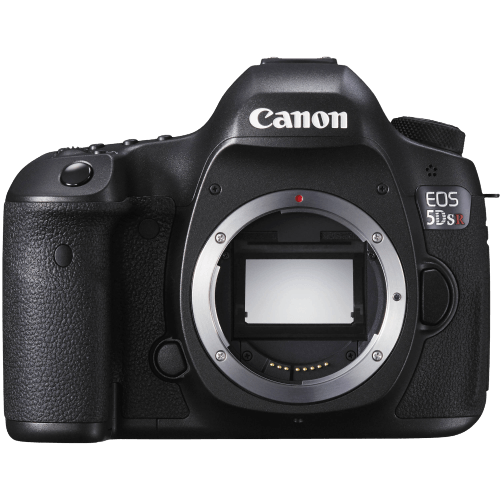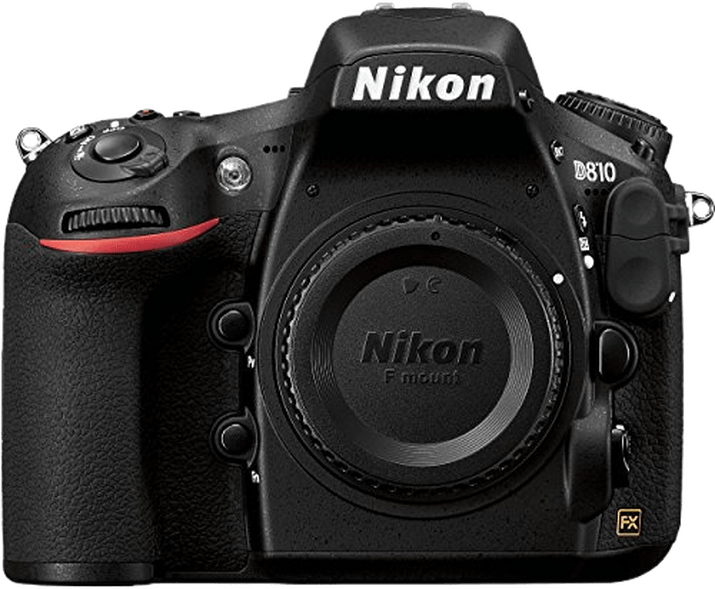Canon EOS 5DS R vs Nikon D810 Comparison
Canon EOS 5DS R

Nikon D810

The Nikon D810 outperforms the Canon EOS 5DS R with a score of 72/100 compared to 68/100. Both cameras are DSLRs released in 2014 and 2015, respectively. They share similarities in size, with the Canon measuring 152 x 116 x 76mm and weighing 930g, while the Nikon is slightly larger at 146 x 123 x 82mm and weighs 980g.
The Canon EOS 5DS R has a higher launch price of $3900, but this doesn’t necessarily translate to better features. The Nikon D810, priced at $3300, takes the lead with its higher score. Although the Canon has its merits, the Nikon D810 proves to be a better investment for photographers seeking a high-quality DSLR.
Canon EOS 5DS R vs Nikon D810 Overview and Optics
The Nikon D810 emerges as the winner in the optics comparison, scoring 76/100, while the Canon EOS 5DS R scores 73/100. Both cameras possess common specifications, such as 5 fps shooting speed, CMOS sensor type, full-frame sensor size, and the absence of image stabilization.
The Nikon D810 outperforms the Canon EOS 5DS R in terms of its sensor. The D810’s sensor has a DXOMARK score of 97, which is considerably higher than the 5DS R’s score of 86. This difference in scores highlights the superior image quality and low-light performance of the D810. Additionally, the Nikon camera uses the Expeed 4 processor, which contributes to its overall better image quality.
On the other hand, the Canon EOS 5DS R boasts a higher megapixel count of 50.6, compared to the Nikon D810’s 36.3 megapixels. This advantage allows the 5DS R to capture more detailed images, which can be beneficial for large prints or cropping. Furthermore, the Canon camera features a dual Digic 6 processor, providing faster image processing and improved performance.
Both cameras have their respective lens mounts – the Canon EF for the EOS 5DS R and the Nikon F FX for the D810. The choice between these cameras may depend on the lenses a photographer already owns or plans to invest in.
In the optics comparison, the Nikon D810 showcases better image quality and sensor performance, while the Canon EOS 5DS R offers a higher megapixel count for more detailed images. Ultimately, the decision between the two cameras will depend on a photographer’s priorities and lens preferences.
Canon EOS 5DS R vs Nikon D810 Video Performance
The Nikon D810 outperforms the Canon EOS 5DS R in video capabilities, with a score of 70/100 compared to the Canon’s 57/100. Both cameras offer Full HD video resolution and have maximum video dimensions of 1920 x 1080. Additionally, both cameras have built-in time-lapse functionality.
The Nikon D810’s higher score is due to its ability to record video at a maximum frame rate of 60fps, which is double the Canon EOS 5DS R’s maximum frame rate of 30fps. This allows the D810 to capture smoother and more detailed video, especially in fast-moving or action-packed scenes. This significant advantage in frame rate makes the Nikon D810 the better choice for those who prioritize video quality.
However, the Canon EOS 5DS R holds its own in other aspects of video recording. While it may not have the same frame rate capabilities as the Nikon D810, it still provides high-quality Full HD video and time-lapse functionality. This makes it a suitable option for those who do not require the highest frame rate but still require a capable camera for video recording.
Taking into consideration the differences in video capabilities, the Nikon D810 emerges as the superior camera for video recording due to its higher frame rate. The Canon EOS 5DS R, while not as strong in this area, remains a viable option for those who do not need the highest frame rate. Ultimately, the choice between these two cameras will depend on the specific video requirements of the user, with the Nikon D810 being the better option for those prioritizing video quality.
Canon EOS 5DS R vs Nikon D810 Features and Benefits
The Canon EOS 5DS R and the Nikon D810 both have a feature score of 59 out of 100. Despite having the same score, each camera has its advantages and disadvantages when comparing their features.
Both cameras share some common specifications. They have a 3.2-inch screen size, no touchscreen, no flip screen, no GPS, and no Bluetooth. However, there are differences in screen resolution and WIFI connectivity.
The Nikon D810 surpasses the Canon EOS 5DS R in screen resolution, with 1,229,000 dots compared to 1,040,000 dots. This higher resolution provides better image quality when reviewing photos or navigating menus. Additionally, the Nikon D810 has WIFI connectivity, allowing for easy transfer of photos and remote control of the camera through a smartphone. This feature adds convenience and versatility to the D810, making it better in terms of connectivity.
On the other hand, the Canon EOS 5DS R does not have any clear advantages over the Nikon D810 in this comparison. Both cameras have the same feature score, and the common specifications they share do not make one superior to the other.
After comparing the features of the Canon EOS 5DS R and the Nikon D810, it is clear that the Nikon D810 has an edge in terms of screen resolution and WIFI connectivity. These advantages make the Nikon D810 a better choice for those who prioritize image quality and seamless connectivity. However, the Canon EOS 5DS R remains a solid option for those who are not concerned with these specific features, as it shares many of the same specifications as the Nikon D810.
Canon EOS 5DS R vs Nikon D810 Storage and Battery
The Nikon D810 outperforms the Canon EOS 5DS R in storage and battery with a score of 79/100, compared to the Canon’s 65/100. Both cameras share common specifications, including two memory card slots and compatibility with SD/SDHC/SDXC cards, as well as Compact Flash cards. Neither camera offers USB charging.
The Nikon D810 boasts a longer battery life of 1200 shots, using the EN-EL15 battery. This is significantly more than the Canon EOS 5DS R, which provides 700 shots with its LP-E6 battery. The advantage in battery life makes the Nikon D810 a more reliable choice for extended shooting sessions.
The Canon EOS 5DS R, however, does not have any significant advantages over the Nikon D810 in terms of storage and battery. Its lower score reflects this fact.
Considering these factors, the Nikon D810 is the superior option in terms of storage and battery performance. Its longer battery life ensures reliability during extended use, while both cameras offer similar storage capabilities.
Canon EOS 5DS R vs Nikon D810 – Our Verdict
Are you still undecided about which camera is right for you? Have a look at these popular comparisons that feature the Canon EOS 5DS R or the Nikon D810:
